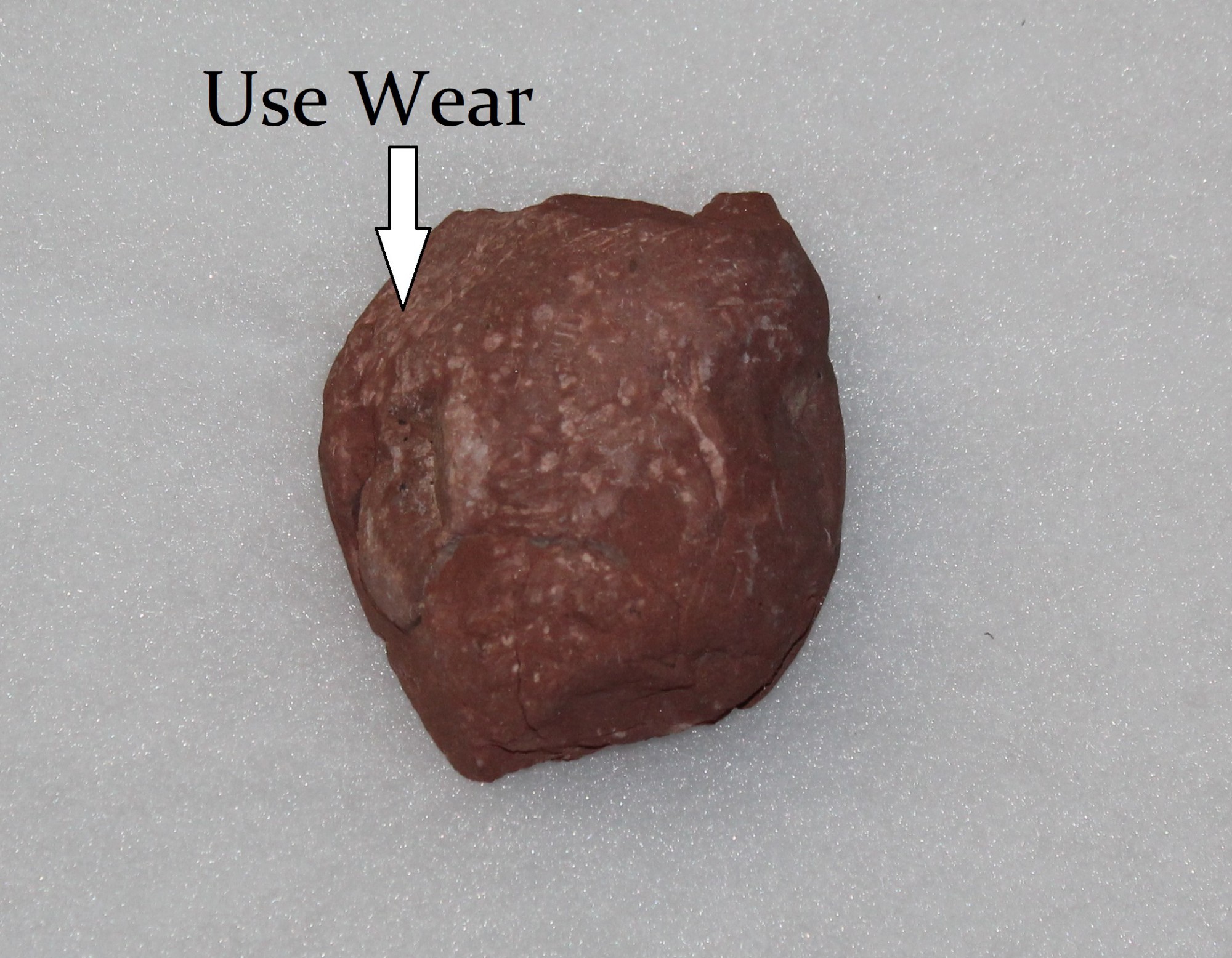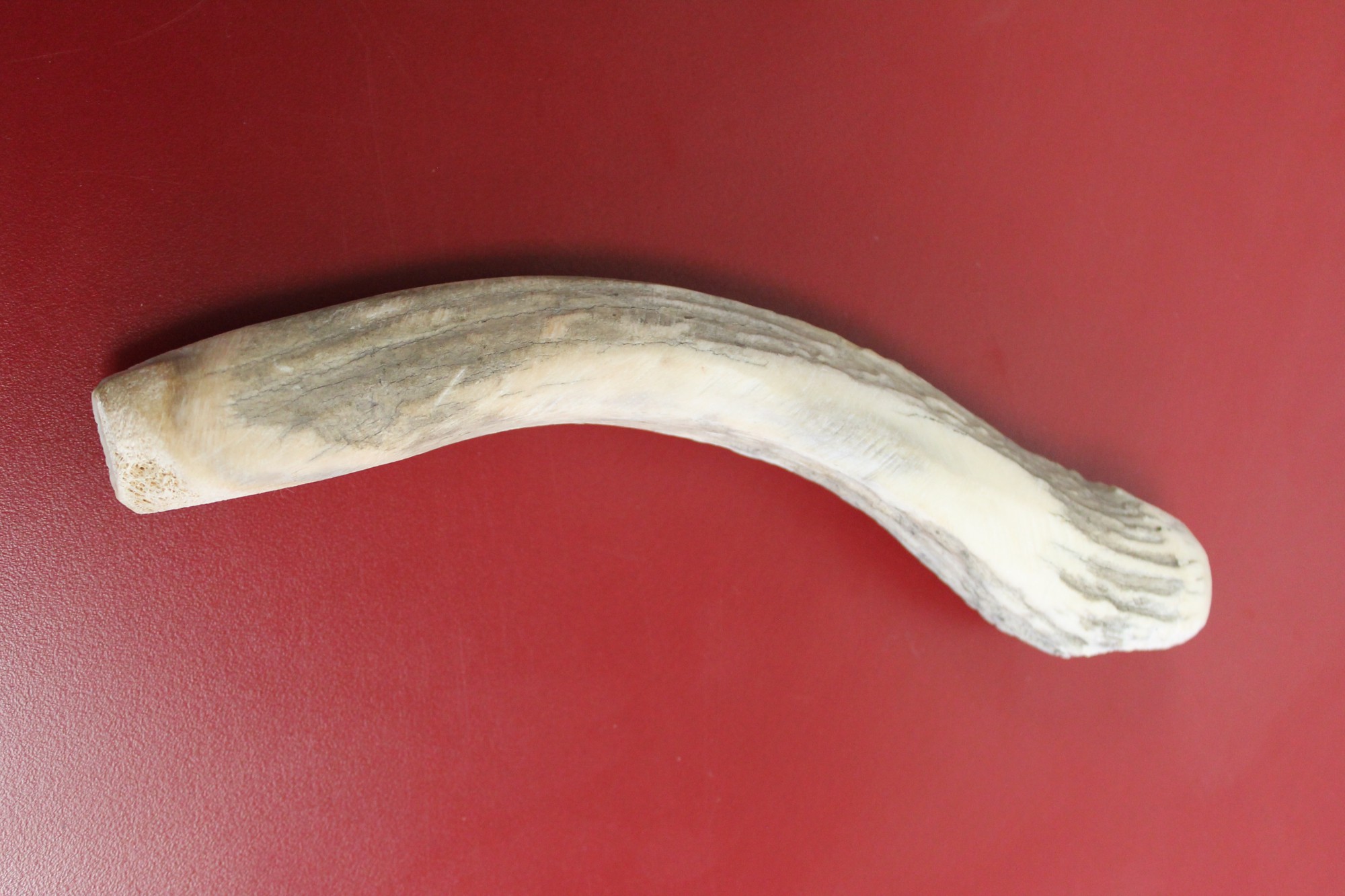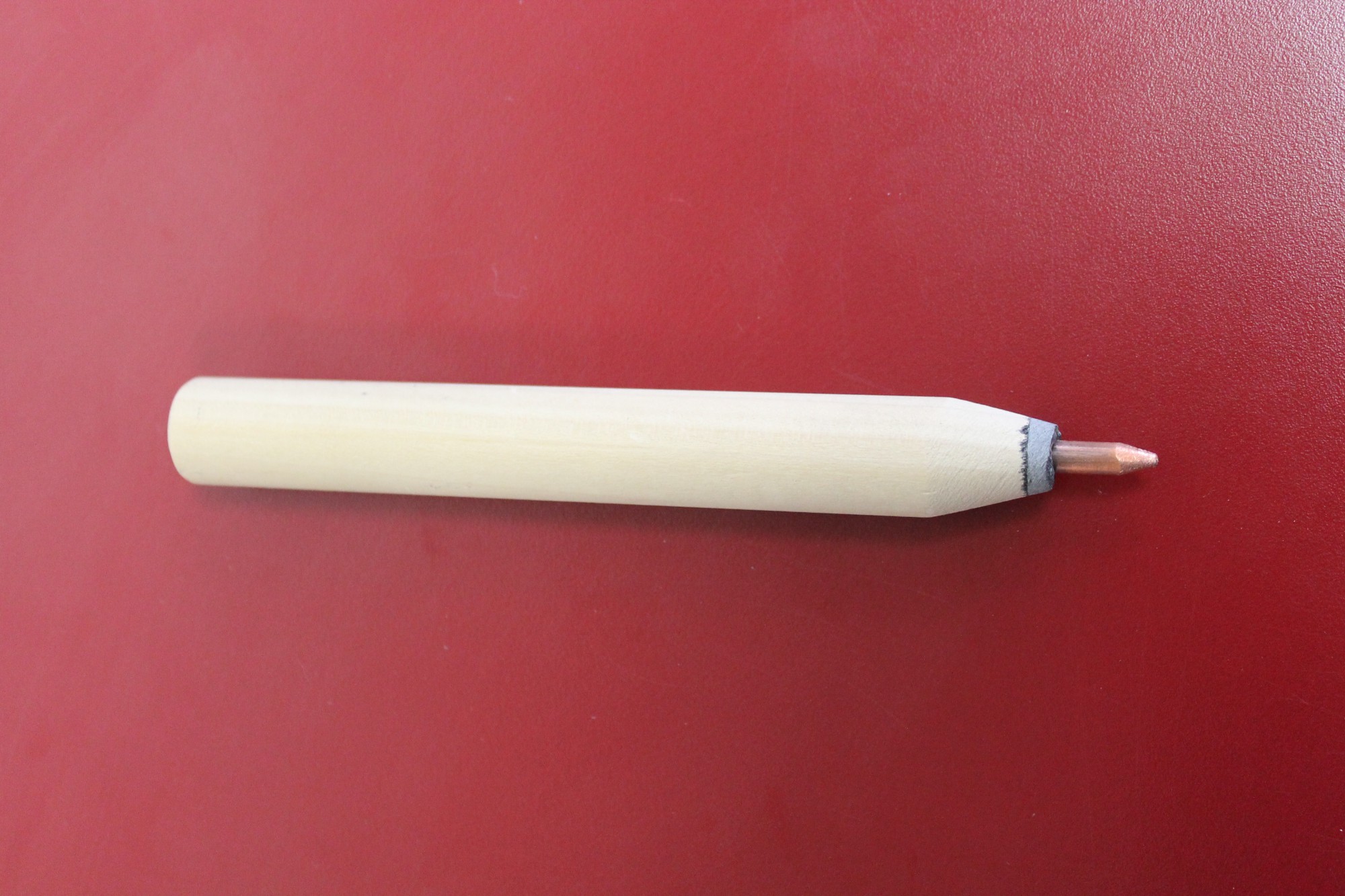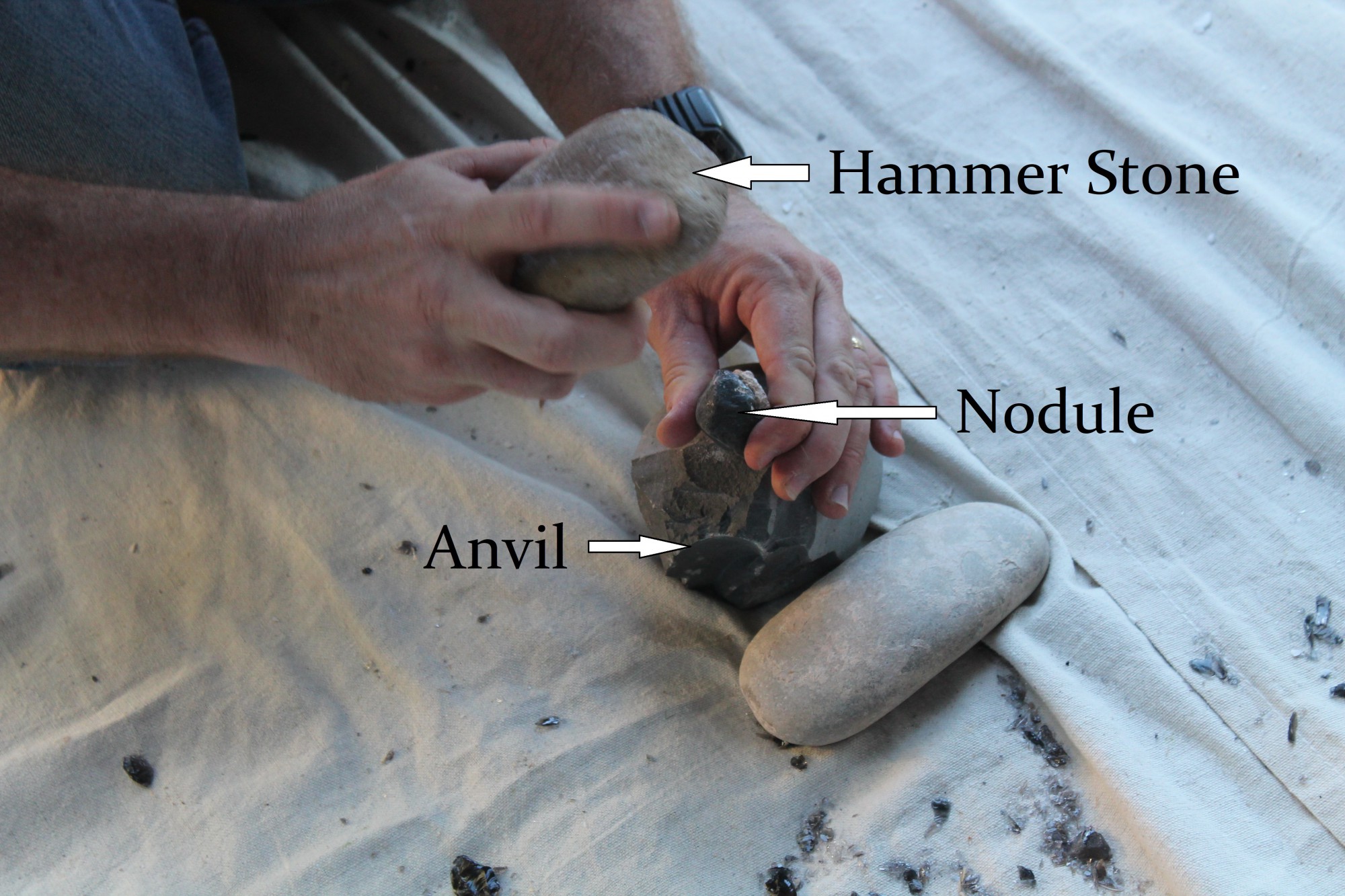Flintknapping Tools and Techniques
Flintknapping requires much more skill than bashing rocks together. The knapper must match the right knapping tools with the material to be knapped in order to produce the desired tools. The knapper controls the angle and level of force to make different types of flakes. Here are some of the tools and techniques that knappers use.
Hard Hammer Percussion
The knapper chooses the hardness and weight of the hammer stone based on material to be knapped. Hard hammer percussion tends to produce a large bulb of percussion on flakes. Archaeologists identify hammer stones based on their use wear. A well-used hammer stone has a lot of nicks and scratches.

Soft Hammer Percussion
Knappers traditionally use hardwood or antler billets as soft hammers. The antler billet comes from the section of antler that attaches to the skull. Soft hammers initiate a bending break in the toolstone. Soft hammer percussion typically results in a smaller bulb of percussion than hard hammer percussion. Soft hammer percussion often produces a small lip under the platform. The lip is easier to identify by touch than by sight.


Pressure Flaking
In pressure flaking, knappers make pressure flakes by using an antler or copper tool to build up force on the edge the nucleus. They then change the angle of the force to initiate material failure and remove the flake. Knappers make pressure flakes to sharpen the edges of bifaces and create notches for projectile points. Pressure flakes are often too small to be caught in the screens used in archaeological excavations.

Bipolar Flaking
Knappers use bipolar flaking for toolstone nodules that lack a platform of less than 90° (e.g. round nodule). The knapper places the nodule on an anvil and breaks it with a hammer stone. The force of the anvil and hammer stone produce tight, concentric rings at platforms at both ends of the flake.

Abrading Platforms
In order to produce longer flakes and reduce shatter, the knapper will abrade the platform by sanding the edge of the nucleus so that the platform is not too thin or weak. Abraders are often made of sandstone.
